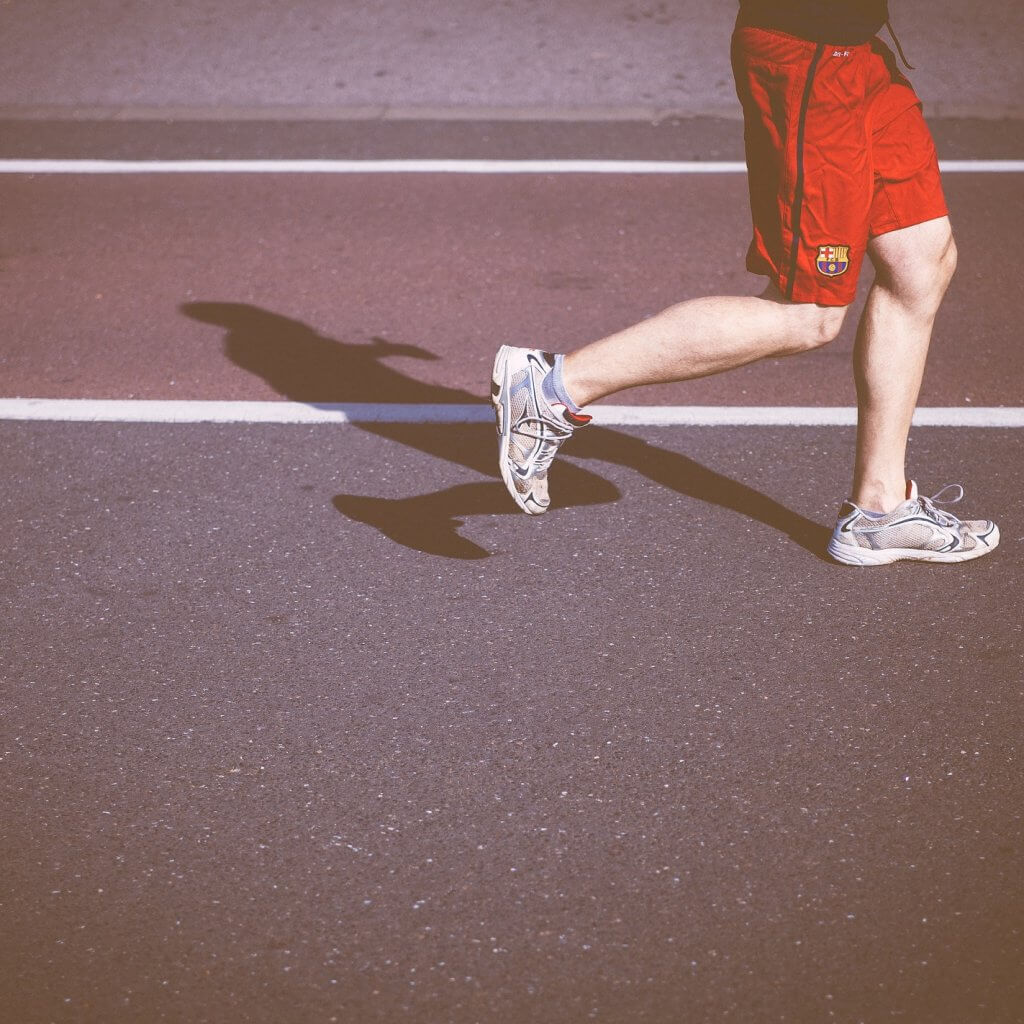Let’s Talk About Foot Strike Patterns

Like most athletes, runners like to take apart just about every aspect of their sport. And, as is often the case with matters of health and fitness, opinions generally vary widely on any given topic. Depending on who you talk to you, you’re going to get all sorts of thoughts on everything from shoe choice to proper form and everything in between.
One of the most hotly debated topics, though – and one that has a bearing on many other aspects of the sport – is that of foot strikes. As it turns out, there are tons of differing theories on precisely how your foot should contact the ground with each strike. But which argument actually has science behind it? Does your foot strike pattern actually matter?

The Options
Typically, there are three different foot strike patterns that enter into any discussion on the topic. These are:
- Forefoot – The balls of the feet and toes connect with the ground first.
- Midfoot – The middle portion, comprising the majority of your foot, lands all at once.
- Heelstrike – Your heel hits the ground first, with the load rolling forward onto the midfoot.
It’s important to point out, though, that a 2014 study out of Belgium actually uncovered what has been called the fourth strike. The argument could be made, however, that this often ignored pattern is really more of a third-and-a-half footstrike. Known as “atypical heelstrikers” these runners land on their heels but then roll the stress all the way to their toes instead of stopping at the midfoot.
The Debate
Essentially, the argument regarding foot strike always boils down to the basic belief that one strike pattern reduces the amount of stress placed on your joints and – as a result – your risk of sustaining an injury. Occasionally, this might also include assertions that a given strike pattern increases your risk of injury or reduces your performance in some way.

While the exact basis for these claims will vary, each side usually has some study or studies to back up their view. Which can make it very frustrating to sort through this whole debate and figure out what’s really going on.
In reality, though, these conflicting studies might be exactly what you need to look at. When viewed as a whole, the body of research suggests something fascinating and liberating about foot strike patterns: What if they don’t actually matter?
Balancing The Views
As mentioned, proponents for each foot strike style can generally point to at least one study stating that their chosen strike can reduce their risk of injury. And this is generally true. But, in the larger picture of things, the reality is that each foot strike style does have a risk of injury – the difference is what joint is at risk.
Forefoot strikes, for example, place the greatest amount of stress on your ankles and toes. Which makes sense. By shifting the weight forward, though, the amount of impact force that makes it up to your knees is greatly reduced.
A heelstrike, however, means that you’re landing on a ridged joint that doesn’t have a lot of give. As a result, your ankle does very little to absorb the force of impact, effectively transferring that load to your knees.

Midfoot strike patterns, interestingly, have a way a distributing the impact forces in a fairly even way – reducing the amount of stress placed on any one joint. One study in the European Journal of Applied Physiology, for example, found that a midfoot strike reduces overall impact forces on your joints and can reduce your risk of dealing with shin injuries.
This debate, though, generally isn’t limited to the issue of injury prevention. Running efficiency and exercise performance are also usually brought into the discuss. Typically, the thinking goes that a forefoot strike allows you to land lightly and quickly bounce on to your next step. Heel and mid-strikes, however, tend to shorten your stride and therefor reduce your overall performance.
And, really, this seems pretty logical. But what does science say? That it doesn’t actually matter. To coming to this conclusion, a 2013 study in the Journal of Applied Physiology measured the energy use and running economy of 37 different runners – 18 forefoot strikers and 19 heelstrikes. At the end of the study, the team found no different between the two groups.

Should You Change?
So, if no strike pattern has any real advantages over the others, should you bother to change your strike patter? No, probably not.
As it turns out, your strike pattern depends on a huge range of individual factors including genetics, bone structure, flexibility, speed and even terrain. It’s very likely, then, that your strike pattern may change several times throughout your life without you giving it much thought.
Granted, you may find that you are experiencing discomfort, pain or even injury by running a certain way. Trying to change your strike pattern all at once, though, may conflict with some of the other aspect of your form and fitness. Rather than attempting this shift all at once, then, it’s likely better to work on your overall performance. Often, for example, a lack of flexibility may force you to run a certain way. Instead of actively working against that natural feedback, then, try increasing your flexibility.
Similarly, most modern running shoes encourage – and even enforce – a heelstrike patter. If this is causing you problems, don’t try to take on a new strike pattern in those same shoes.
Ultimately, then, foot strike pattern is only part of the your overall form.
Sources
- , Relationship between running speed and initial foot contact patterns., Online Publication
- , Impact reduction during running: efficiency of simple acute interventions in recreational runners, Online Publication
Latest Articles
 Is Running on a Treadmill Easier Than Running Outside?Runners have their own preferences, whether it is treadmill running, running outside on the road, or exploring trails. So...
Is Running on a Treadmill Easier Than Running Outside?Runners have their own preferences, whether it is treadmill running, running outside on the road, or exploring trails. So... Is It OK to Use Trail Running Shoes on the Road?While trail running shoes can be used on roads, especially in situations where a runner encounters mixed terrains or pref...
Is It OK to Use Trail Running Shoes on the Road?While trail running shoes can be used on roads, especially in situations where a runner encounters mixed terrains or pref... How to Fix Sore Quads After Running?Rest, ice, gentle stretching, and over-the-counter pain relievers can help soothe sore quads after running. Also, ensure ...
How to Fix Sore Quads After Running?Rest, ice, gentle stretching, and over-the-counter pain relievers can help soothe sore quads after running. Also, ensure ... 10 Fruits With The Most Electrolytes to Replace Sports DrinksThese fruits are high in electrolytes such as potassium, magnesium, and calcium, essential for hydration, muscle function...
10 Fruits With The Most Electrolytes to Replace Sports DrinksThese fruits are high in electrolytes such as potassium, magnesium, and calcium, essential for hydration, muscle function...

